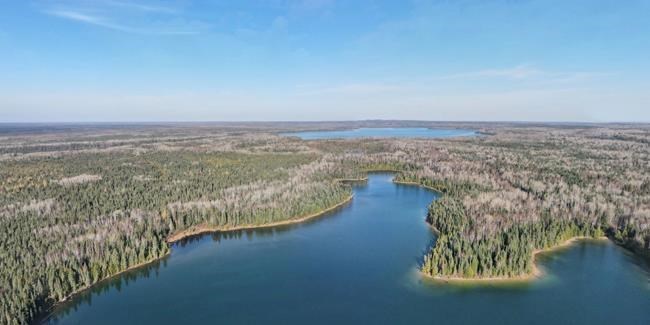OTTAWA — The largest private land conservation project in Canadian history is unfolding in northern Ontario.
The Nature Conservancy of Canada spent the last year negotiating the purchase of 1,450 square kilometres of the boreal forest near Hearst, Ont., from pulp and paper giant Domtar.
The company hasn't logged in the area for more than a decade and began working with Nature Conservancy in January 2021 to make a deal for the land.
Now named the Boreal Wildlands, the region is twice as big as the entire city of Toronto, and will be protected from industrial development including logging and mining.
"In the face of biodiversity loss and climate change, nature offers us very real solutions," Nature Conservancy president Catherine Grenier said in an online news conference announcing the purchase Friday.
The Boreal Wildlands is home to 100 lakes, 1,300 kilometres of rivers and streams and is a critical habitat for many of Canada's most iconic species including black bears, wolves, moose and the endangered woodland caribou.
It is also a massive natural carbon sink, storing the equivalent of the lifetime emissions from three million vehicles.
"Boreal Wildlands, as you've seen, is a heaven for biodiversity," said Grenier. "But it's also a very important natural defence against climate change. The vast forests, the rich soil, and the deep peatlands form a large carbon sink. Conservation keeps carbon in the ground, and the land will continue to absorb more greenhouse gas emissions over time."
The conservancy intends to create a carbon offset market with the area, selling carbon credits to companies and individuals trying to offset their own emissions. That money will contribute to protecting the area, and to other projects.
The $46-million conservation project is supported by both the federal and Ontario governments, as well as private donations to the Nature Conservancy.
It will contribute to the federal government's promise to protect 25 per cent of land and marine areas by 2025. Canada has nearly 10 million square kilometres of land and 5.8 million square kilometres of marine areas.
As of the end of 2021, 1.3 million square kilometres of land was considered protected, or 13.5 per cent. Almost 800,000 square kilometres of marine regions are protected, or 13.9 per cent.
"We understand that protecting and conserving nature is one of the most important steps we can take to curb biodiversity loss, while also fighting climate change and advancing reconciliation," said federal Environment Minister Steven Guilbeault. "Nature is the glue that binds all these important causes together."
Ontario Environment Minister David Piccini said protecting natural areas is critical to conserving natural diversity "building resiliency against the effects of climate change."
Rob Melton, senior vice-president at Domtar, said the company has owned the land for more than 50 years and logging projects have supplied Domtar's pulp and paper mills in Ontario.
"We felt like the opportunity to participate in this project with NCC was actually of more value to Domtar and utilizing this land for conservation than it was for future harvesting," he said.
The Nature Conservancy is now working on a property management plan to determine access to the wildlands for outdoor recreational use.
This report by The Canadian Press was first published April 22, 2022.
Mia Rabson, The Canadian Press



